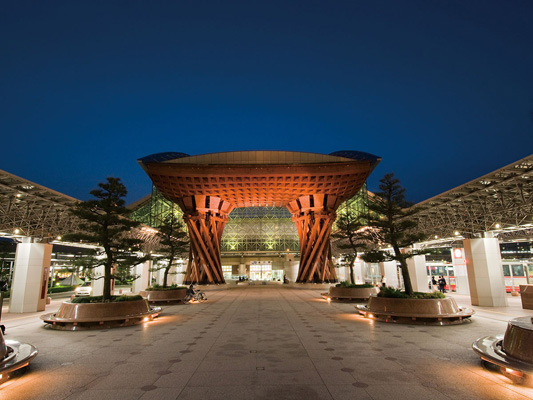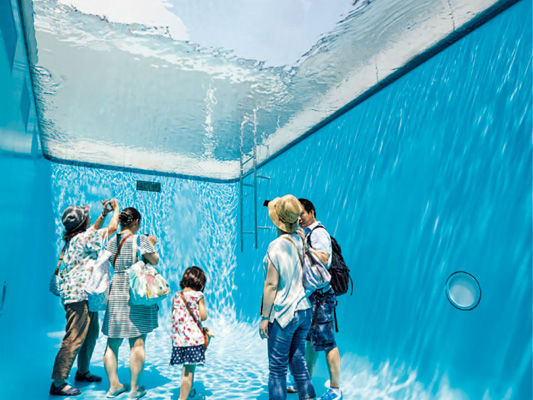If you are looking for authentic Japanese history, culture, and cuisine, then Ishikawa is the place to go.
Ishikawa's history started with the Kaga clan who ruled the land of Ishikawa during the Edo period (1603-1868). It was here that its traditional crafts, performing arts, food culture, and other aspects developed by the use of the financial power second only to the shogun.
Ishikawa Prefecture has been free of any major disasters and conflicts for over 400 years, and in Kanazawa City, the Prefectural capital, you can enjoy the atmosphere of the samurai era, such as Kenroku-en garden and the Nagamachi samurai residences where samurai once lived.
The Noto Peninsula to the north of Kanazawa faces the Sea of Japan where traditional fishing villages dot coast, providing a glimpse of the simple lives of the people living there with the blessings of the sea and satoyama woodlands.
Southern Kanazawa is home to the historic Kaga hot spring village with its 1,300 years of history, where you can enjoy its beautiful views in any season.
Ishikawa has a great food culture that uses vegetables and fresh seafood from the Sea of Japan. Kaga cuisine that chefs put the craftsmanship into and serve in elegant traditional bowls, such as Kutani porcelain and Wajima lacquerware, is not only delicious, but a feast for your eyes.
Ishikawa's history started with the Kaga clan who ruled the land of Ishikawa during the Edo period (1603-1868). It was here that its traditional crafts, performing arts, food culture, and other aspects developed by the use of the financial power second only to the shogun.
Ishikawa Prefecture has been free of any major disasters and conflicts for over 400 years, and in Kanazawa City, the Prefectural capital, you can enjoy the atmosphere of the samurai era, such as Kenroku-en garden and the Nagamachi samurai residences where samurai once lived.
The Noto Peninsula to the north of Kanazawa faces the Sea of Japan where traditional fishing villages dot coast, providing a glimpse of the simple lives of the people living there with the blessings of the sea and satoyama woodlands.
Southern Kanazawa is home to the historic Kaga hot spring village with its 1,300 years of history, where you can enjoy its beautiful views in any season.
Ishikawa has a great food culture that uses vegetables and fresh seafood from the Sea of Japan. Kaga cuisine that chefs put the craftsmanship into and serve in elegant traditional bowls, such as Kutani porcelain and Wajima lacquerware, is not only delicious, but a feast for your eyes.
 Getting from Tokyo to ISHIKAWA
Getting from Tokyo to ISHIKAWA
Route 1
-
 Haneda Airport → Komatsu airport : Approximately 1 hour 10 minutes
Haneda Airport → Komatsu airport : Approximately 1 hour 10 minutes
Route 2
-
 JR Tokyo station → JR Kanazawa station : Approximately 2 hour 30 minutes by Hokuriku shinkansen
JR Tokyo station → JR Kanazawa station : Approximately 2 hour 30 minutes by Hokuriku shinkansen
 All Itineraries
All Itineraries
-
HOKURIKU × TOKYOTraveling under the theme of "A Journey to be Reborn, Physically and Mentally, through Traditional Food and Experiences," you will visit a variety of recommended spots from Tokyo to Hokuriku.
In Tokyo you will visit the Nihondo Kampo Museum and the only valley in all of Tokyo's 23 wards, and will then experience Japanese kaiseki, traditional multi-course haute cuisine, at a restaurant in a garden that once served as a residence for a daimyo lord and their hatamoto vassals.
From there, you will make your way to Hokuriku, where you will experience both hot springs connected to famed haiku master Matsuo Basho (1644 - 1694) and zen meditation at Eiheiji temple, which had two stars bestowed upon it by the Michelin Green Guide Japan. Following this, you will refresh your body and mind by meditating under a waterfall at Oiwasan Nissekiji temple. -
HOKURIKU × TOKYOBecoming familiar with traditional crafts that are rooted in people's lifestyle and the climate in Japan will lead to a deeper understanding of Japanese culture. From Tokyo to Hokuriku, explore the cities where traditional crafts were born and thereby discover parts of Japan's culture and charm that you did not know about.
In Tokyo this route will take you to spots related to bonsai trees and Hokusai's ukiyo-e pictures, while in Hokuriku it will take you to spots related to glass crafts and famous Kutani-ware ceramics. This is a route recommended for people who are interested in traditional Japanese crafts.

 Spots around
Spots around
-

Kanazawa Station
-

Kenroku-en Garden
-

Naga-machi Bukeyashiki District(Nagamachi Samurai Residences District)

 Festivals of ISHIKAWA
Festivals of ISHIKAWA
 Local specialty shop
Local specialty shop
See all shops














































